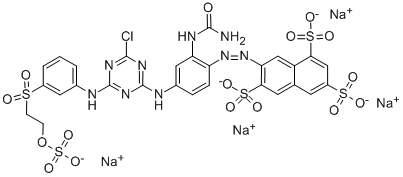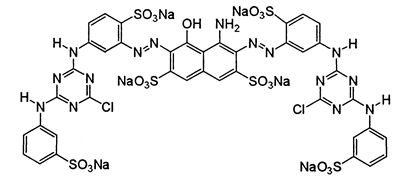Saturday, November 30, 2013
How can I remove all the colors from my orange and yellow acrylic afghan?
Name: Ruth
Country or region: United States
Message: I HAVE A HAND KNIT ACRYLIC MULTI COLORED FLAME STICH AFGHAN - WHITE, ORANGE & YELLOW. HOW CAN I REMOVE A L L THE COLORS, AND JUST LEAVE IT WHITE?
THANKS SOOO VERY MUCH
I'm sorry to have to tell you that this is very unlikely to work.
It is possible to remove many dyes, but not all dyes; however, even the ones that can be removed usually leave a little color, often a dull beige, but sometimes a quite unexpected color. Your orange and yellow acrylic yarns might remain unchanged in color, or they might lighten to paler colors, but not all the way to white. Chances are small that all of the color can be successfully removed to leave a 100% white afghan.
If you are willing to take the risk, especially if you just want to remove enough of the orange color that you can dye it a different color or if you will be happy with a beige-and-white afghan, it is important not to try to use chlorine bleach for this project. The hypochlorite in chlorine bleach tends to damage synthetic fibers. Instead, you need to use a sulfur-based color removing chemical.
One of the best color removers that is easy to find in the US is Rit Color Remover. (See "What chemicals can be used to remove dye?".) The most likely place to find Rit Color Remover is at a fabric store or a crafts store. Rit Color Remover is a much better product than is Rit All Purpose Dye. (Rit dye does not work on acrylic, and is inferior to other dyes even for cotton.)
To use Rit Color Remover, you can try either the washing machine method or the stovetop method. Instructions for two methods are on or in the box. The stovetop method works better, but the washing machine method is much easier, so it's better to try it first. You may need to use two or more boxes of Rit Color Remover, depending on the size of your washing machine, or only one box if you use a five-gallon plastic bucket. You must use the hottest tap water available, which means you might have to turn off the cold water supply to your washing machine if it always adds cold water. If you use the stovetop method, be careful not to let water boil; it would be safest to keep the temperature no higher than 140°F.
Saturday, November 09, 2013
Looking for the chemical structures of two reactive dyes: Bezactiv Gelb S-3R 150% and Bezactiv Blau HE-RM 133%
Hello! ... I make some common researches on two reactive dyes: Bezactiv Gelb S-3R 150% and Bezactiv Blau HE-RM 133%. Could you send to me structures of these dyes or at least their IUPAC names and Colour Index names? Thank you very much in advance! I am waiting your answer!
Bezactiv Gelb S-3R is a brand name for a reactive dye, judging from the "activ" in its name. The "Bez" suggests that the manufacturer is Bezema AG, in Switzerland. The correct way to proceed would be to ask the manufacturer what the dye's generic name is. In the absence of information from the manufacturer, we can make guesses, but we can't be sure that they are correct. Fortunately, reactive dyes tend to be referred to more consistently than other dye classes by the same code names, from one manufacturer to another, though this is by no means entirely reliable.
According to an article by Vassileva V., Jeleva J., in the journal Vlákna a textil, volume 12 (4), pages 162–166 (2005), "Bezaktiv S is a group of bifunctional dyestuffs incorporating mono-chlorotriazine and vinyl-sulphone reactive groups in a single molecule." (I found this article online in a PDF of multiple articles.)
A chart at the Textile Knowledge website indicates that Novacron Yellow S-3R, made by Huntsman, may be the same dye as Remazol Ultra Yellow RGB, made by Dystar, and as Dychufix Yellow 3RX, made by Hawelle in China; it seems to indicate that all three of these are reactive yellow 145. The chemical structure of reactive yellow 145 is widely available; here it is from the Chemical Book.com website:
You can see the monochlorotriazine reactive group to the left of the center, in the form of a ring with six nitrogens, and a chlorine attached, while the vinyl sulfone reactive group is on the far left in this structural drawing. The website chemexper.com lists its structural name as 7-[[2-(Carbamoylamino)-4-[[4-chloro-6-[[3-[[2-(sulfooxy)ethyl]sulfonyl]phenyl]amino]1,3,5-triazin-2-yl]amino]phenyl]azo]-1,3,6-naphthalenetrisulfonic acid tetrasodium salt .
I am not at all sure that this is the correct identity for your Bezactiv Gelb S-3R. It is possible that instead Bezactiv Gelb S-3R is the same dye that is referred to by other manufacturers as Reactive Yellow S-3R, such as Cibacron Yellow S-3R and Novacron Yellow S-3R (Novacron is the name that replaced Cibacron when Ciba sold their dye division to Huntsman Textile Effects). The Novacron S dyes have an optimum reaction temperature around 60°C. If this guess is correct, then what you are looking for may be Colour Index Reactive Yellow 205. Like reactive yellow 145, reactive yellow 205 is classified as a bifunctional vinyl sulfone dye. The marketizer.com website lists its structural name as 1,3,6-Naphthalenetrisulfonic acid, 7-[2-[2-[(aminocarbonyl)amino]-4-[[4-[[5-amino-2-[2-[4-(ethenylsulfonyl)phenyl]diazenyl]-4-sulfophenyl]amino]-6-chloro-1,3,5-triazin-2-yl]amino]phenyl]diazenyl]-, sodium salt (1:4) .
I'm unable to find information anywhere on Bezactiv Blau HE-RM. Presumably it is among the HE group of reactive dyes; HE are bifunctional reactive dyes that were introduced under the brand name Procion, and in some cases sold to dye artists among the Procion H line of monochlorotriazine reactive dyes. Unfortunately I cannot locate any reference to a reactive blue HE-RM. I can only recommend you contact Bezema AG, in Switzerland, or find an institution with a subscription to the Colour Index so that you can look it up there, hoping that this dye has been assigned a Colour Index name.
I don't know whether there is any relationship between reactive blue HE-RM and reactive blue HE-R. Sometimes an additional letter in a dye code indicates an entirely new dye molecule, while other times it merely indicates a different dye concentration. Like the other HE dyes, reactive blue HE-R is a bifunctional reactive dye whose two reactive groups are both monochlorotriazines. Its generic name is Colour Index reactive blue 171. The chemical structure as shown at worlddyevariety.com is The color-producing part of the molecule is shown in the center, with a symmetrical arrangement of the monochlorotriazine sections on either side. If reactive blue HE-RM is not this molecule, it probably has a similar arrangement, with a slightly different chromogen in the middle.
(Please help support this web site. Thank you.)
Friday, November 08, 2013
I have this white dress that is made of matte jersey knit fabric. I wondered what dye could be used to get this dress black.
Name: Joy
Message: I have this white dress that is made of matte jersey knit fabric. The website says, "The fabric is a unique matte knit that will not pill, resists wrinkles, and has beautiful drape and stretch." I didn't see anything that mentioned jersey knit fabrics in the FAQ and wondered if you could throw any advice my way. I wondered what dye could be used to get this dress black. Not gray or off-black, but a really nice true black.
What is the fiber content of your matte jersey knit fabric? Is it made from cotton, or polyester, or another fiber? This is the most important question when you want to dye something. Different fibers require entirely different types of dye, which means entirely different dyeing methods as well.
The form of the knit does not matter at all, in making a fabric dyeable or not dyeable. It doesn't matter whether it is jersey knit or knit another way or woven.
"Matte" refers to a lack of shininess, which could be due to the way the knit was made, or could have been added afterwards by coating the fabric with some sort of treatment. If the lack of sheen is due to a coating, then that coating may prevent dyeing from working well. It might cause the dye to take only lightly, or in a splotchy manner.
Resistance to pilling is also often produced by coating the knit fabric with some sort of resin. I have been able to dye a dress that had such a coating, but the color was much paler than it should have been. Fortunately this time the color was smooth and even; often this sort of product will cause patchy uneven color, which is a much bigger problem.
Chances are that your dress cannot be dyed to a true black, but only to a gray color. If the dress is dyeable, it is very likely that the stitching at the seams will stay white.
See if you can find out the fiber content of the dress. The dress will be much easier to dye if it is rayon or cotton or bamboo than if it is polyester or acetate.
—Paula
A big thank you to Joy for reporting the problem with the contact form on the All About Hand Dyeing website!
(Please help support this web site. Thank you.)



